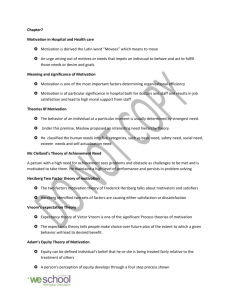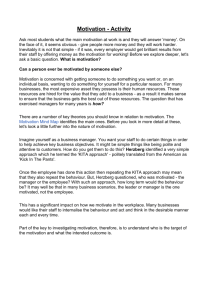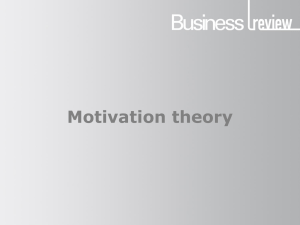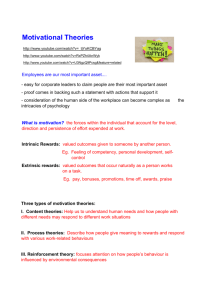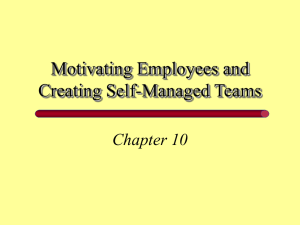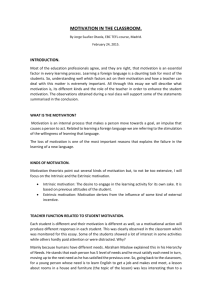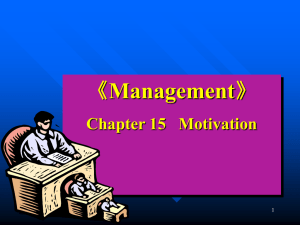Section 10.1 - Motivation and Individual Needs
advertisement
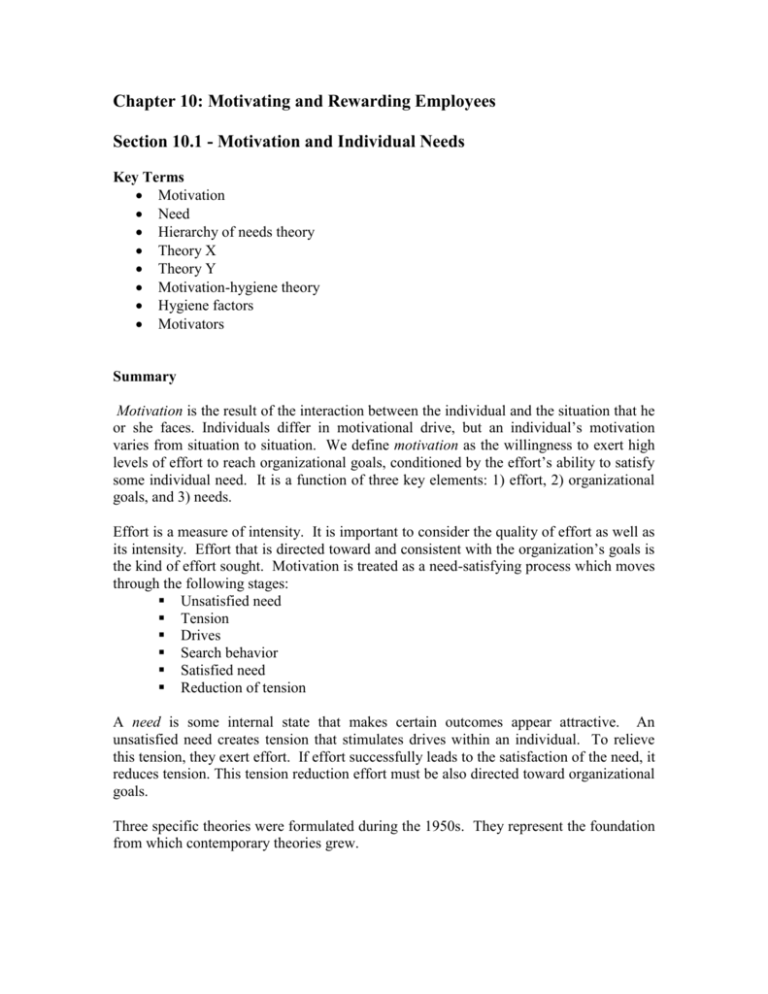
Chapter 10: Motivating and Rewarding Employees Section 10.1 - Motivation and Individual Needs Key Terms Motivation Need Hierarchy of needs theory Theory X Theory Y Motivation-hygiene theory Hygiene factors Motivators Summary Motivation is the result of the interaction between the individual and the situation that he or she faces. Individuals differ in motivational drive, but an individual’s motivation varies from situation to situation. We define motivation as the willingness to exert high levels of effort to reach organizational goals, conditioned by the effort’s ability to satisfy some individual need. It is a function of three key elements: 1) effort, 2) organizational goals, and 3) needs. Effort is a measure of intensity. It is important to consider the quality of effort as well as its intensity. Effort that is directed toward and consistent with the organization’s goals is the kind of effort sought. Motivation is treated as a need-satisfying process which moves through the following stages: Unsatisfied need Tension Drives Search behavior Satisfied need Reduction of tension A need is some internal state that makes certain outcomes appear attractive. An unsatisfied need creates tension that stimulates drives within an individual. To relieve this tension, they exert effort. If effort successfully leads to the satisfaction of the need, it reduces tension. This tension reduction effort must be also directed toward organizational goals. Three specific theories were formulated during the 1950s. They represent the foundation from which contemporary theories grew. Maslow’s hierarchy of needs theory states that there is a hierarchy of five human needs: physiological, safety, social, esteem, and self-actualization; as each need becomes satisfied, the next need becomes dominant. Douglas McGregor proposed two distinct views of the nature of human beings. Theory X the assumption that employees dislike work, are lazy, seek to avoid responsibility, and must be coerced to perform and Theory Y the assumption that employees are creative, seek responsibility, and can exercise self-direction. The manager molds his or her behavior toward employees according to these suppositions. He proposed that participation in decision-making, responsible and challenging jobs, and good group relations, would maximize work effort. Psychologist Frederick Herzberg proposed the motivation-hygiene theory. Believing that an individual’s attitude toward his or her work can very well determine success or failure, Herzberg concluded that the replies of people who felt good about their jobs were significantly different from the replies they gave when they disliked their jobs. Intrinsic factors such as achievement, recognition, and responsibility were related to job satisfaction. When they were dissatisfied, they tended to cite extrinsic factors such as company policy and administration, supervision, interpersonal relationships, and working conditions. According to Herzberg, the factors that lead to job satisfaction are separate and distinct from those that lead to job dissatisfaction. Hygiene factors are Herzberg’s term for factors, such as working conditions and salary, which, when adequate, may eliminate job dissatisfaction but do not necessarily increase job satisfaction. To motivate people on their jobs, Herzberg suggested emphasizing motivators, those factors that increase job satisfaction. Two critical questions posed about the early theories of motivation are: How are they alike, and how are they different? Each theory includes some lower order and some higher order needs. Each of the three theories has one significant flaw. None have been substantiated by further research. There are distinct differences among the three theories. While each looked at motivation, they did so from different perspectives. Three similar results differentiated by a unique focus. Section Outline I. Motivation and Individual Needs II. Early Theories of Motivation A. What is Maslow’s Hierarchy of Needs theory? B. What are McGregor’s Theory X and Theory Y? C. What is Herzberg’s Motivation-Hygiene theory? D. What are the similarities and differences among the early theories of motivation?
